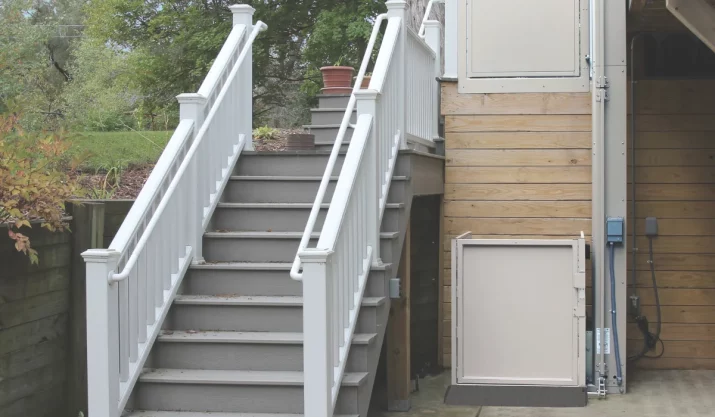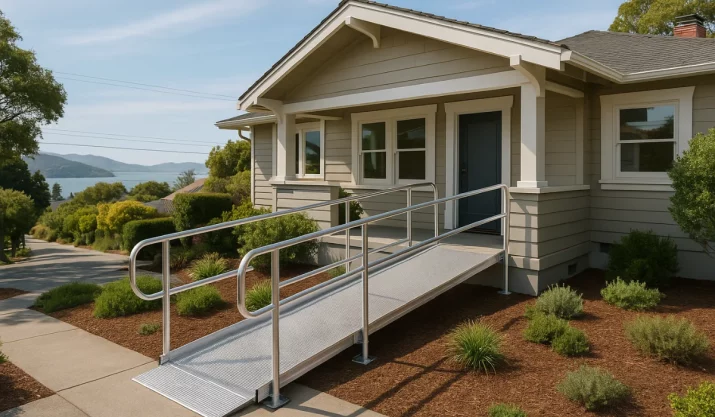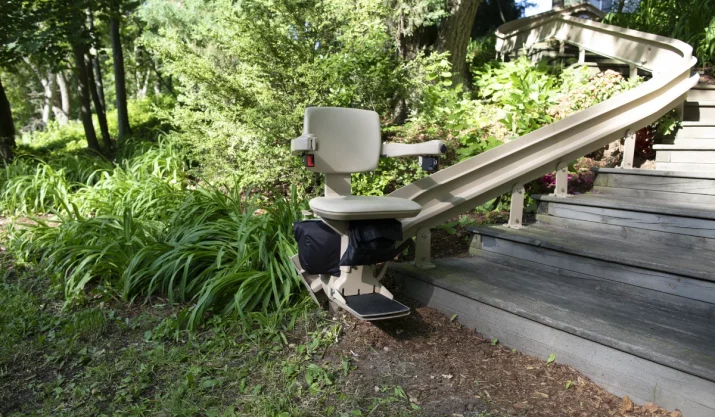Cost-Saving Tips for Installing Wheelchair Ramps for Home on a Budget
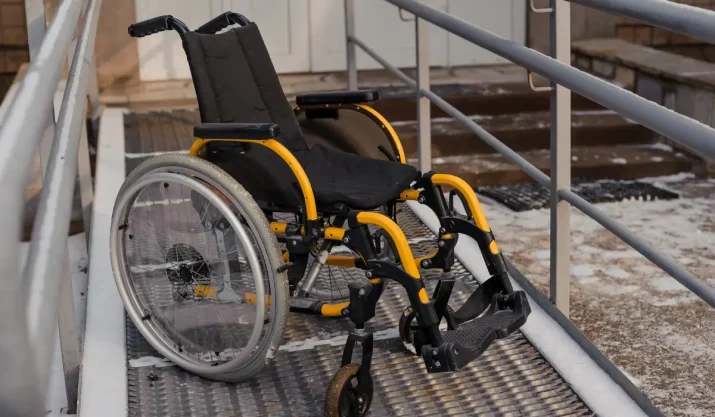
Table of Contents
- Key Takeaways
- Tip 1: Measure Ramp Length and Slope Before You Buy
- Tip 2: Use Modular Wheelchair Ramps Instead of Custom Builds
- Tip 3: Apply for Local Grants or Funding
- Tip 4: Try Portable Wheelchair Ramps for Smaller Needs
- Tip 5: Look for Gently Used Ramps
- Tip 6: Build It Yourself with a Ramp Kit
- Tip 7: Focus on What You Need Most First
- Let’s Make Your Home Accessible
If you or someone in your family uses a wheelchair or scooter, having a ramp at home can make life much easier. A wheelchair ramp helps you move safely in and out of your house and gives you more freedom. But installing a ramp can get expensive, especially in California.
Fortunately, there are ways to reduce costs while still keeping things safe and reliable.
In this article, you’ll find smart, simple tips to help you install a wheelchair ramp on a budget.
Key Takeaways
- A correctly measured ramp based on your doorway height helps you avoid wasting money and failing ADA rules.
- A modular wheelchair ramp is a smart choice because it costs less and can be moved or reused later.
- Local grants and programs in California can help pay for ramps, handrails, and other home access upgrades.
- Used ramps, portable options, and DIY ramp kits make it easier to stay safe and accessible on a tight budget.
Tip 1: Measure Ramp Length and Slope Before You Buy
Before you order anything, figure out exactly how long your ramp needs to be.
For every inch of height at your door, you’ll need one foot of ramp length to stay within ADA ramp rules.
For example, if your doorway is 10 inches above the ground, your ramp should be at least 10 feet long. Getting this right from the start saves money by avoiding extra materials or having to rebuild the ramp later.
Many ramp providers, including California Mobility, offer free estimates or DIY measurement tools.
Tip 2: Use Modular Wheelchair Ramps Instead of Custom Builds
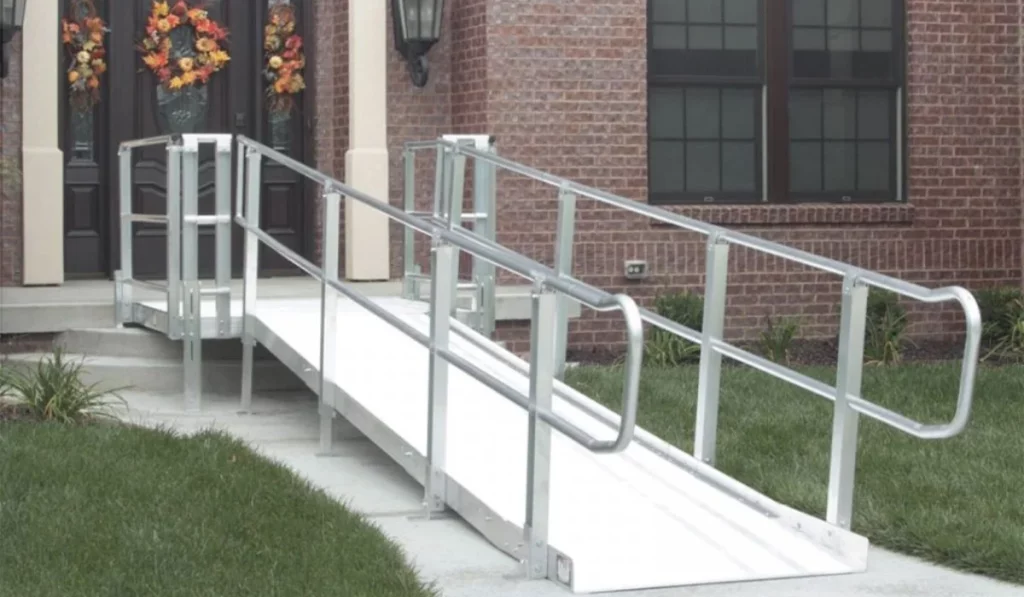
A custom-built ramp can be costly. It often requires a contractor, and in California, labor isn’t cheap. A modular wheelchair ramp, on the other hand, is made up of easy-to-fit pieces. They are ADA compliant, slip-resistant, and work well for most homes.
You can adjust a modular access system to fit different entry ramps or doorways. Many are made from aluminum, which is both strong and lightweight.
Plus, modular ramps often come with a warranty and can be moved or resold if your needs change later.
Tip 3: Apply for Local Grants or Funding
If you live in California and have a disability, you might qualify for help paying for your access ramp. Some counties offer grants or low-interest loans to help with home access changes.
Veterans and people on Medi-Cal may also get funding for ramps, handrails, or other home upgrades.
Check with your city’s housing office or a Center for Independent Living near you. These groups often know which programs are available and how to apply.
Tip 4: Try Portable Wheelchair Ramps for Smaller Needs

For homes with just a step or two, portable wheelchair ramps can be a much cheaper option. These include rubber threshold ramps, singlefold ramps, and multifold ramps.
They’re ideal for doorways or low porches, especially if you rent your home or only need the ramp part-time.
Brands like EZ-ACCESS offer durable, non-slip portable wheelchair ramps you can buy at places like Lowe’s or order online. They’re simple to use, easy to store, and ADA compliant for safety.
Tip 5: Look for Gently Used Ramps
In many parts of California, people sell or donate used wheelchair ramps. Sites like Craigslist, Facebook Marketplace, or nonprofit equipment exchanges often have listings for aluminum wheelchair ramps, ramp kits, or handrails.
If you go this route, make sure the ramp still meets ADA guidelines and has the right weight capacity. Ramp materials like expanded metal and aluminum are especially durable and easy to clean up for reuse.
Tip 6: Build It Yourself with a Ramp Kit
If you’re good with tools or know someone who is, consider building a ramp using a ramp kit.
Many kits come with everything you need, including solid surface platforms, handrails, and instructions. These are a great option for lowering costs while still getting a wheelchair accessible entry ramp.
Just be sure to check with your city to see if a permit is required.
In some parts of California, even small projects like a handicap ramp need approval to make sure they’re safe and legal.
Tip 7: Focus on What You Need Most First
When money is tight, start with what matters most—like a safe, non-slip access ramp with the right ramp length and weight capacity for your scooter or wheelchair. You can always add extras like custom handrails or a weather-resistant finish later on.
Because much of California has mild weather, especially in coastal areas, you may not need all the upgrades right away. This can help you stay within budget while still meeting your accessibility needs.
Let’s Make Your Home Accessible
At California Mobility, we offer affordable access solutions that make your home safer for wheelchair users. Whether you need portable wheelchair ramps, aluminum wheelchair ramps, or a modular access system, we have options to match your needs and your budget.
We’re here to help you find the right access solution that fits your home and your budget. Call us today to talk about your project or request a quote.




